BHUTAN DRAGON TOUR
Description
Itinerary
1
Day 1:Arrival: Paro, transfer to Thimphu
On arrival, guests will be received at the airport by our representative who will be your tour guide and companion for the whole duration of your tour in Bhutan.
Drive to your hotel in Thimphu. After refreshing yourselves and having lunch, visit the following
Kuensel phodrang The Kuensel Phodrang or the Buddha point is the world’s largest sitting Buddha statue, the statue is 167 feet high. The statue is situated on top of a hill overlooking the city of Timphu, The statue is constructed out of bronze and is studded with many semi-precious stones. On the drive to the statue the steep winding hill road offers an unparalleled view of the city of Thimphu and is an excellent place to capture a view of the city especially after dark.
Motithang Takin preserve: The Motithang Takin Preserve also known as the Thimphu Zoo by many is a small natural preserve for the Takin Bhutan’s national animal. The preserve is a forested preserve that mimics the Takin’s natural habitat, in addition to the Takin there are a few musk deer and barking deer that live inside the preserve. Overnight in Thimphu
2
Day 2:Thimphu sightseeing
Post breakfast visit the following
Jungshi Handmade Paper Factory: This is a private factory and they manufacture a special watermark paper as well as products such as lampshades, envelopes and other objects made of traditional Bhutanese paper. They make great gifts to take home with you and are genuinely unique. It is not just the texture of these handmade paper products that will intrigue you, but also their unique earth tones and natural hews. Bhutan protects its environment through long-term sustainability, and they follow it because they do not destroy the plant when they extract the raw material required. Paper products are manufactured from “daphne papyracea”.
Folk Heritage Museum: The folk heritage museum was open to the general public in 2001 upon completion. Its treasure troves of culture and rich Bhutanese heritage provide rich insights into the Bhutanese ethos. The tour of this almost living museum will also give you a glimpse onto how many rural folk of the country live today following the ancient Bhutanese ways.
Memorial Chorten: Referred to as the Memorial Chorten, it’s actual name is Gongzo Chorten or Gyaldren Chorten. The Chorten (Stupa) is a chief landmark in the Capital city and is also a very sacred place of worship for the local eople. The idea of the chorten was conceptualized by the 3rd King His Majesty Jigme Dorji Wangchuck to ward off negative energies. After His Majesty’s demise, the Chorten was built in his memory by the 4th King and the Queen Mother in 1972.
Changangkha Lhakhang: It is a 12th century temple sitting on top of a hill overlooking Thimphu valley with the main statue of Chenrizig (The Buddha of Compassion). This temple is often mistaken for a dzong
by visitors because it looks like one, and apart from the temple it also houses a monastic school. Most of the couples go to this temple soon after birth to get blessings for their child.
Tashichho Dzong: The Dzong is a Buddhist monastery cum fortress at the northern edge of Thimpu the capital city of Bhutan. It has been seat of the Royal government since 1952 and presently houses the Throne room, the Kings secretariat and the Chief Abbot’s office. The Tashichho dzong is also home to several ministries of the Bhutanese government, and the Central Monk Body which is the apex organization of the country’s main spiritual order. Overnight at a hotel in Thimphu.
3
Day 3:Thimphu – Punakha
Have breakfast and drive to Punakha. On the way stop at Dochula Pass (3,100 m): The Pass is probably the best known mountain pass in Bhutan. It’s about 30 kilometres away from the capital city Thimphu on the road to Punakha. On a clear day the pass offers visitors a spectacular view of the majestic eastern Himalayan Ranges. The pass is also marked by the 108 Druk Wangyal Chortens.
108 Druk Wangyal Khangzang Chortens: Located on Dochula pass, they were built for the well-being of all sentiment beings on earth and as a tribute to the Kings of Bhutan for their selfless service and leadership they offer to the people of Bhutan. These Stupas or Chortens also represent the peoples love, appreciation and loyalty towards the country’s Kings.
At Lobesa, hike to Chimi Lhakhang: Also known as the ‘Temple of Fertility’, it sits on the top of a small round hill surrounded by rice fields. The temple is dedicated to Lam Drukpa Kuenley, also known as ‘The Divine Madman’. He was an accomplished master but he is remembered more for the outrageous nature of his teachings, often using sexual inclinations. It is a pilgrimage site especially for couples without children and many swear that one will be blessed with children after visiting this place. (NOTE: THIS TEMPLE HAS SEXUAL DEPICTIONS AND YOU MAY WANT TO RECONSIDER IF YOU ARE NOT COMFORTABLE)
Post lunch check-in at your hotel, rest a while and visit Punakha Dzong: Pungtang Dechen Phortang Dzong is located at the confluence of the Mo Chhu and the Po Chhu River, and is the second oldest Dzong in Bhutan. The Dzong is home to some of the most sacred relics of the Drukpa Kagyu School of Buddhism. Punakha Dzong has also served as the capital Bhutan till 1955 before the capital was moved to Thimphu. The Dzong is still the winter residence of the Je Khenpo (chief abbot). Overnight at a hotel in Punakha/ Wangdue Phodrang
4
Day 4:Punakha – Bumthang
Post breakfast, drive toward Bumthang. On the way you will cross 2 passes, the first one Pelela (3300m)is less than an hour’s drive away. From the pass you will start descending and come across many villages, each with its own charm and beauty. Stop at Trongsa viewpoint to take in the view of Trongsa Dzong.
The road starts ascending up to the third pass, Yotungla at 34oom. The air is much cooler and from there you will descend towards the valleys of Bumthang, the hills are much gentler and the valley wider, Bumthang is known as the ‘Switzerland in Bhutan’. Bumthang has 4 distinct valleys, Chumey, Chamkhar, Tang and Ura, your hotel is located in the first valley which is about 25kms away from town (Chamkhar valley) but is set in a picturesque location with views of open valleys of fields and meadows. Overnight at a hotel in Bumthang (NOTE: ROAD CONDITIONS ARE VERY BAD DUE TO MAINTENANCE)
5
Day 5: Bumthang sightseeing
You will spend most of the day visiting local places of interest.
Jambey lhakhang: It was built by King Srongsen Gampo of Tibet in 659 AD and is one of the oldest temples in the country. The temple was blessed by Guru Rimpoche during his visit to Bumthang. It was renovated by Sindhu Raja after Guru Rimpoche restored his life with his magical powers. Many believe that there is a natural lake under the temple in which Guru took refuge on several occasions.
Kurjey Lhakhang. The temple complex, according to legend, Guru meditated in a cave there to subdue an evil spirit and left an imprint of his body in the cave to serve as a reminder to all evil beings of his wrath. A cypress tree stands behind the temples, it is believed to have grown from Guru Rinpochhe’s staff. The Kurjey Lhakhang Temple complex consists of 3 major temples and surrounding Chortens. The first one dates back to the 17th Century, second one was built by the first King in the 1900’s and the last one was built by the Queen Grandmother in the 1980’s
Tamshing Lhakahng The temple was constructed in 1501 by the great Pema Lingpa himself. Before 1960 Tamshing was privately owned. The core mission of the Tamshing monastery is to teach the Dharma, perform religious service for the community and educate the young monks under its care. Since the monastery is not state run the monks find it a challenge to support the operation of this monastery and survive off donations from the devout. Most of the young monks in the monastery are under the age of 15 and are either orphans or come from very poor families who can’t afford to send their children to even the state-run schools.
Mebartsho (The Burning Lake): It is not a lake as such but a small stream instead which gets collected into a small pool. This is the place where Pema Lingpa discovered his first treasure. The villagers didn’t believe that he found the treasures there. So, to prove that he was not lying he jumped in the lake with a burning butter lamp in his hand, when he came out he had some more treasures in his hand and the lamp was still burning.Overnight at a hotel in Bumthang
6
Day 6:Bumthang sightseeing
Post breakfast, drive to Tang Valley: It’s the birth place of Bhutan’s most famous treasure discoverer, Terton Pema Lingpa, and is also the smallest and narrowest among the 4 valleys of Bumthang. The people raise sheep and cows and yak at a little higher elevation. The valley is not so fertile but has been subject to experimental farming to improve organic agricultural products. It’s about an hour to hour and half long drive from Chamkhar town till the valley center from where one can see Ugyencholing Palace Museum perched on a hill overlooking the valley.
In Tang, visit Ugyenchholing Palace Museum: It used to be a residence of the ruler of the valley in the medieval days. It has now been converted into a museum and is managed by the descendants of the old family, most of the times the great grand-daughter stays there and gives tours to visitors. IT takes about 30-45 minutes of hiking to reach the Museum located on top of a small hill in the valley.Have lunch there and drive back to Chamkhar town.Overnight at a hotel in Bumthang
7
Day 7:Bumthang – Phobjikha
Have early breakfast and drive to Phobjikha, the valley of the Black Necked Cranes. This is the winter nesting grounds for the endangered Black Necked Cranes, they start arriving by October end and leave for the Tibetan plateau by February. The valley is believed to have been created by glaciers and is shaped like a bowl, hence the name ‘Phob’ meaning bowl. Once there stop at Gangtey monastery, a privately funded
Buddhist college of Nyingmapa sect. It’s worth going in for a short visit to see the beautiful carvings inside. In Trongsa, visit the following:
Trongsa Dzong: Originally named Chokor Rabtense Dzong it’s commonly referred to as Trongsa Dzong. This Dzong has played a very important role in the unification of Bhutan. The old East-West highway passed right through the Dzong making the Governor a very powerful man. The first and the second Kings ruled the country from here.
After that, take a trail that goes down the hill, it’s called the Gangtey Nature Trail and is a beautiful hike around the valley through lightly covered pine and juniper forests. This is also the closest you will come to the cranes (during winters) as it’s prohibited to go away from the trail and down to the marshes in the valley. Your car will pick you up at the end of the marshes in the valley to take you to your hotel.Overnight at a hotel/ guest house in Phojikha
8
Day 8:Phobjikha – Paro
After breakfast, drive towards Wangdue Phodrang, stop at the bridge for photo op of the Wangdue Dzong ruins (destroyed by fire in June 2012),. Drive up to Dochula Pass and then down to Thimphu where you will have lunch.Post lunch, rest for a while in Thimphu before driving towards Paro to rest for the day.
Ta Dzong (National Museum): The name Ta Dzong translates to ‘watch tower’ and it served the function of watch tower for the Paro Rinpung Dzong. Back in the day, similar look-out points were built for other dzongs (fortresses) to counter any approaching hostilities, for those were the days of frequent strife. These towers were specifically built high atop hills and other vantage points during the old days. Presently serving as the national museum (since late 60’s), it houses an array of antiquities such as ancient thangka (exquisite scroll painting), mural paintings and other forms of art done by great personalities of those days, original textiles of the kingdom which represent the culture that still flourishes, weapons & armour used back in the day, household objects typical to the Bhutanese people’s way of life back then and even now, and other natural and historical artifacts.
Kyichu Lhakhang: Considered the oldest temple along with Jampa and Kenchosum Lhakhang in Bumthang, it dates back to the 7th century when a Tibetan King ordered 108 temples to be built in a single night to subdue a huge ogress. It was later renovated in the mid 19th century and in the late 1960’s by the Grand Queen Mother. It is also considered by many to be one of the holiest places in the country. Inside the compound is an orange tree which always has oranges no matter what the season.Overnight at a hotel in Paro
9
Day 9:Paro, Tiger’s Nest hike
Have early breakfast and drive up to the base of Taktsang Monastery (Tiger’s Nest). The most famous and sacred site among all the places in Bhutan. Guru Padmasambhava is said to have come riding on a flying tigress to this place and meditated in a cave for 3 months, it wasn’t until Zhabdrung Ngawang Namgyal came to this place and meditated that it gained the popularity that it has now. The present structure is said to be built in the 15th century but was destroyed by fire in 1998 and has been restored.
The walk is about 2 hours till the top through wide pathways which was built during the restoration works. One hour into the climb there is a tea point from where you get a very good view of the monastery, they also serve lunch here. From there it’s about another 45 minutes climb to the 2nd view point and the highest point in the hike. All in all it takes around 5-6 hours for an average person to hike up and then back down to the base.Overnight at a hotel in Paro.
10
Day 10:Depart
Reviews (0)
You must be logged in to post a review.


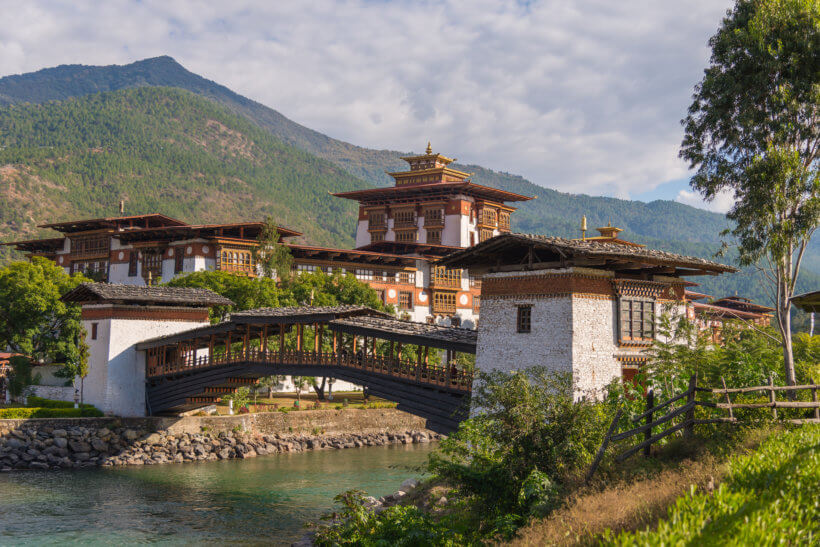
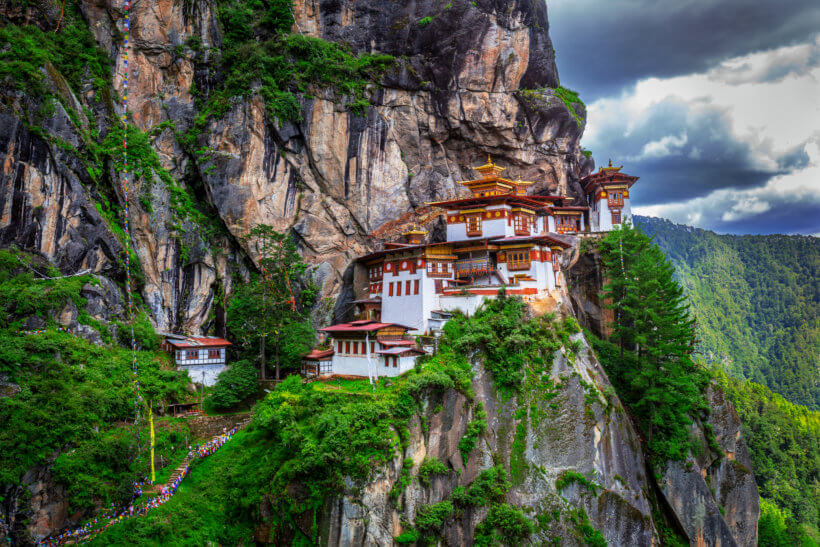
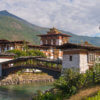
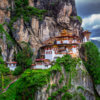

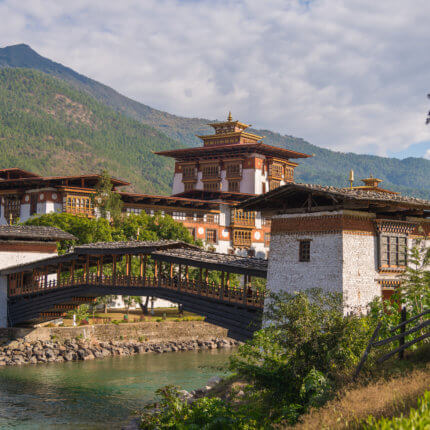
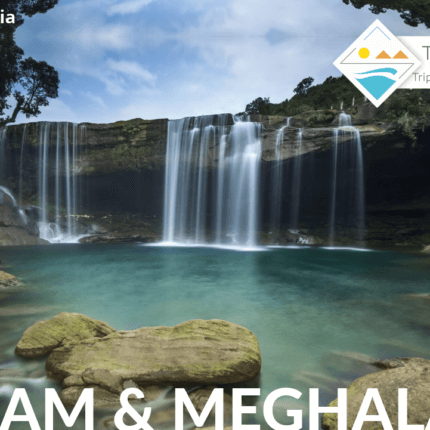
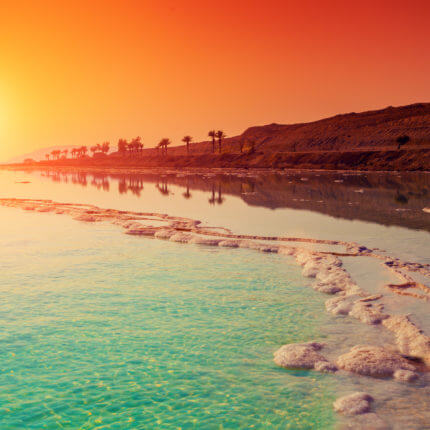
Reviews
There are no reviews yet.